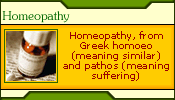|
Fibre forms the skeletal system of plants. Without it no plant
or tree would be able to stand upright. Dietary fibre, the roughage
of yesteryears, consists of those parts of the plant foods that
cannot be digested by enzymes or other digestive secretions in the
ailmentary canal.
Dietary fibre plays an important role in the maintenance of health
and prevention of diseases. There is sufficient evidence to suggest
that an artificial depletion of fibre as in case of refined cereals
and sugar has over the last 100 years contributed to several degenerative
diseases. Recent studies in this area indicate that sufficient intake
of fibre-rich diet may help prevent obesity, colon cancer, heart
disease, gallstones, irritable bowel syndrome, diverticulosis and
diabetic conditions.
Studies have also established that dietary fibre is a collection
of elements with a variety of functions rather than a single substance
with single function as was assumed earlier. This new insight into
the true nature of fibre has given the lie to old beliefs that bran
is synonymous with fibre, that all fibre is fibrous or stringy and
that all fibre tastes the same.
The Importance of Dietary Fibre
Fibre, also called roughage or bulk, is necessary to promote the
wave like contractions that move food through the intestine. High
fibre foods expand the inside walls of the colon, easing the passage
of waste. As fibre passes through the intestine undigested, it absorbs
large amounts of water, resulting in softer and bulkier stool.
Rural Africans digest and eliminate the foods they eat in one-third
of the time it takes for the people living in Western cultures.
This is because the diet of Africans is rich in fibre, which in
turn speeds up the time required to digest food and expel wastes.
It is believed this helps to sweep out harmful substances before
they can cause problems in the body. In fact, these rural people
suffer far less from many of the diseases of the digestive tract
that plague Western man, which is thought to be related to the nature
of their diet.
A high-fibre diet causes a large, soft, bulky stool that passes
through the bowel more easily and quickly. This helps to prevent
stop, or even reverse some digestive tract disorders. A softer,
larger stool helps prevent constipation and straining which can
help avoid or relieve haemorrhoids. More bulk means less pressure
in the colon, and this is important in treating irritable bowel
syndrome and diverticulosis.
Most of urban folks eat only 5 to 10 grams of fibre a day against
the recommended intake of 20 to 35 grams. High fibre foods, such
as fruits and vegetables, also tend to be low in calories, which
in turn do not cause weight gain. Fibre pills generally should be
avoided. They contain relatively little fibre and are expensive.
Fibres containing foods and powdered fibre supplements are better
sources.
High Fibre Diet in the Irritable Bowel Syndrome
Irritable bowel syndrome, sometimes called spastic colon or IBS,
is one of the most common disorders of the lower digestive tract.
There is no disease present in irritable bowel syndrome. However,
its symptoms can resemble other disorders. The symptoms of IBS are
constipation, diarrhoea (or both alternately), abdominal pain, cramps
and spasms. Acute episodes can be triggered by emotional tension
and anxiety, poor dietary habits, and certain medications. Increased
amounts of fibre in the diet can help relieve symptoms of irritable
bowel syndrome and if not treated it may lead to diverticulosis
of the colon.
High Fibre Diet and Colon Polyps / Cancer
Colon cancer is a major health problem. It is second only to lung
cancer in the number of deaths per year. In countries where grains
are unprocessed and retain their fibre, there is lower incidence
of colon cancer. Most colon cancer begins as a colon polyp, a benign
mushroom shaped growth which in time grows and in some people, becomes
a cancer. Colon cancer is preventable if polyps are removed at an
early stage. It is now known that the tendency to develop colon
cancer may be inherited.
But, there may be other factors involved as well. One theory is
that cancer-causing chemicals (carcinogens) in the diet and environment
can stay in contract with the colon wall a longer time and in higher
concentration when the diet is low in fibre. A large, bulky stool
acts to dilute and diffuse these carcinogens and to move them through
the bowel more quickly. Less carcinogen exposure to the colon may
mean less colon polyps and cancer.
High Fibre Diet and Diverticulosis
Colon diverticulosis occurs when pockets or sacks bulge out from
the bowel wall. It is known that these diverticulae occur gradually
over time and are due to excessive pressure or spasms within the
bowel. These pockets usually cause no problem, but sometimes they
can become infected (diverticulitis) or even break open, causing
abscess or peritonitis. A high-fibre diet increases the bulk in
the stool, which reduces pressure within the colon. By so doing,
diverticula formation may be reduced or even stopped.
High Fibre Diet and Cholesterol
As noted above, fibre generally is divided into two categories.
Insoluble fibre is found in wheat bran and in celluloses from vegetables
and fruits. Soluble fibre is commonly found in oatmeal, oat bran
(the best source), guar gum, psyllium seed, fruit pectin and gum
arabic. When mixed with water, it produces a gelatinous mucous gel.
It, too, has bowel-regulating effects. It also acts to lower blood
cholesterol by binding with the cholesterol in the intestine and
carrying it away in the stool. So, a high fibre diet should contain
both types of fibre.
The High Fibre Diet
Dietary fibre is the part of a plant that cannot be digested by
the body. Just as there are many types of Plants, there are also
many types of fibre. Some fibres, such as oat bran, are soluble
in water and from a gelatinous bulk that can lower cholesterol.
Other fibres, such as wheat bran, are insoluble and add bulk to
the stool. Both are important and provide benefits.
High Fibre Foods
High fibre foods can be found in most food groups. Different types
of food should be selected to get the benefits of them all.
- Legumes - including kidney, pinto, navy, lima and baked beans.
The bean family excels in fibre, especially the soluble, cholesterol-lowering
type.
- Whole Grains - wheat bran and oat bran are present in a variety
of cereals and breads. The label should say that the bread contains
whole wheat or grain. Plain wheat bread may lack the fibre. One
cannot always tell by the colour. Some manufacturers artificially
colour bread brown to make it look more wholesome.
- Whole Fresh Fruits - the valuable pectin fibre is found in
the skin and pulp. Figs, prunes and raspberries have the highest
fibre content.
- Cooked or Stewed Fruits - prunes and applesauce are good choices.
- Green Leafy Vegetables - lettuce, spinach, celery, and broccoli
are good examples.
- Root Vegetables - potatoes, turnips and carrots are all excellent
sources.
Since bran can cause rumbling intestinal gas and even some mild
cramping, it should be started in small amounts initially. The amount
can be increased as tolerance is acquired. The goal should be 20
to 35 grams of fibre a day, which will usually produce 1 to 2 soft
and formed stools a day.
The following are good general rules:
- Drink plenty of liquids, including fruit or vegetable juices
and water.
- Eat slowly and chew food thoroughly to allow the upper digestive
tract (oesophagus, stomach and small intestine) to work well.
This may help prevent problems from developing in the lower digestive
tract.
- Eat meals at regular intervals
|


















